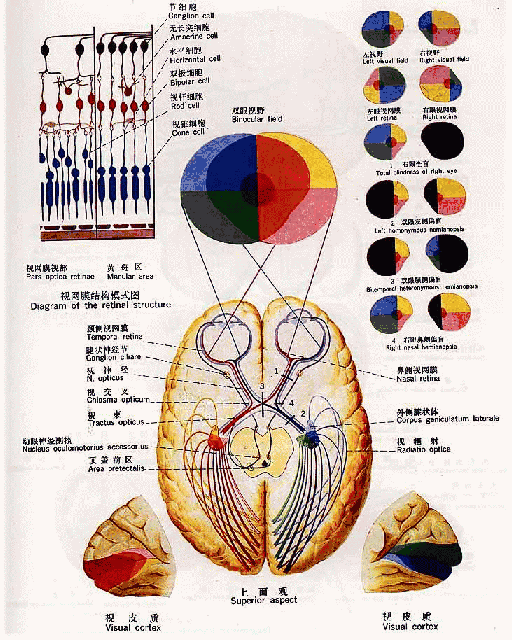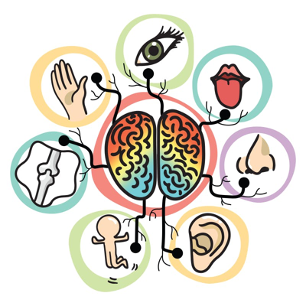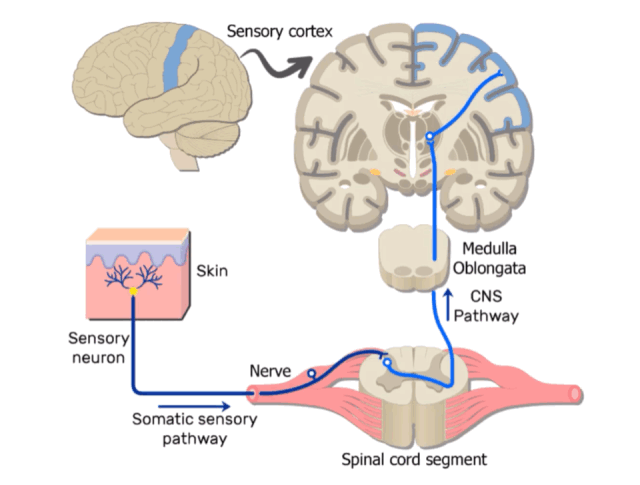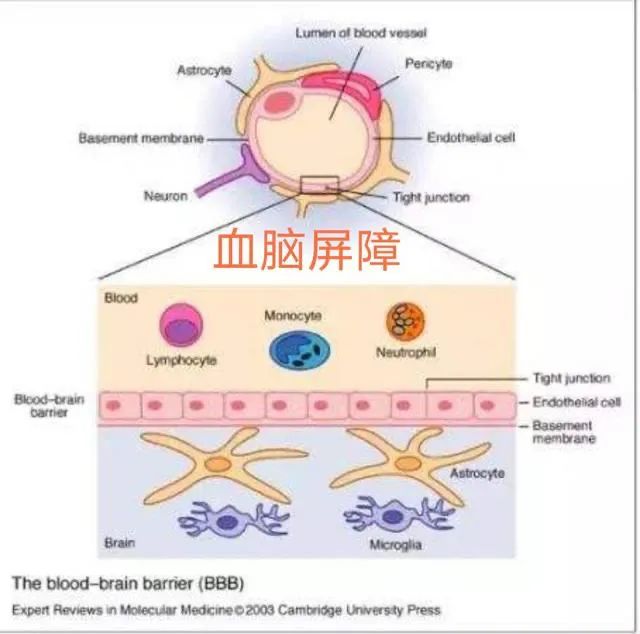History of human thinking evolution: tentative dialogue inside the nervous system
Author:Cool brain Time:2022.08.09


Via: pixabay
The following is the audio of the full text of Miss Sister
Author | Antonio Damasio
Translation | Sun Ningyuan
Rewriting | cotton bear
Grade -Cool Brain Creative
Reading | Pigeon Tsai
Artist | Old carving worm
Edit | Sales increase
It felt awareness and generously gave it to the rest of the thinking.
At the beginning of life, there were no words, no thoughts, no feelings, no mind, no thought, no consciousness, life sailed like this. This is not to say that the world of life has always been simple. On the contrary, it has been complicated from the beginning of 4 billion years ago.
But there are several ways to choose the body. In the branch of our life history, I like to imagine three different and continuous evolutionary stages. The first phase of the sign is to exist; the second stage is to dominate; the third stage is to know and understand.
In my opinion, if you want to make creatures feel, you need to add some characteristics to their creatures. They must be multi -cell and must have a differentiated organ system, which is more or less complicated. Among them, the nervous system shines, which is a natural coordinator who deal with the internal life process and environment. What will happen? We will see a lot.
The nervous system not only makes complex exercises possible, but also eventually makes the birth of a truly novel "brain". It feels like the first example of psychological phenomena, how to emphasize its significance. Emotions enable creatures to show their physical state in their respective minds, focusing on regulating internal organ functions necessary for life: eating, drinking water, and excretion; defense behavior when fear, anger, disgust or contempt; cooperation, conflict, etc. Social coordination behavior; performance of satisfaction, joy and excitement; even those behaviors related to fertility.

Tuyuan Internet
In practice, there is almost no distance between things and things that cause.
It feels like providing their own life experience for the organisms. Specifically, they provide an assessment of the degree of success in their lives for the organism, which is a natural assessment grade based on quality (pleasant or unpleasant, unpleasant, mild or strong). This is a precious and novel information that cannot be obtained by creatures restricted in the "existence" stage.
It is not surprising that emotions are important factor in creating "self". We can imagine ourselves as a psychological process, activated by the state of the organism, anchoring in its body frame (composed of muscle and skeletal structure), and eventually guided by a global perspective provided by visual and auditory sensory channels.
Strangely, every sensory system itself has no conscious experience. Visual system -for example, our retina, visual pathway, and visual cortex can produce maps of the external world and provide corresponding and clear visual images. But only by coordinating the processing process of existence, feeling, and cognition, can the image be linked to our organic bodies and truly understand it and placed it in it. Only in this way can experience appear.
The consequences of this major and unknown physiological steps are unusual. Once the experience starts to connect with memory, feeling, and consciousness, the organism can maintain their history of life, that is, the history of interaction with other organisms or the environment, that is, the history of each independent life, this history No more than personality.

Tuyuan Internet
Start
The history of evolution is likely to start with a tentative dialogue between life chemistry and early nervous system in a special organism. Among the strange creatures that are much simpler than us, this communication may produce feelings such as simple happiness and basic discomfort, rather than a subtle grading, not to mention a complicated feeling like local pain. Nevertheless, this is still a great progress. These tiny starts providing a direction for each creature, a delicate consultant, telling them what to do next and where to go. There is a novel and valuable thing in the history of life: a spiritual body corresponding to the body's body.
The simplest emotional changes begin with the interior of the organism. Its appearance is vague and filled, and it feels that it is not easy to describe or classify. The word "primitive feeling" accurately describes this view. In contrast, the "mature feeling" provides a vivid and credible image for our "internal" (internal organs, such as the heart, the heart, the lungs, and the intestine, and the movements they perform, such as beating, breathing, and contraction).
In the end, like local pain, the image becomes clear and concentrated. But there is no doubt that the vague, approximate or precise feeling can provide information. They carry important knowledge and firmly root these knowledge in their minds. Is muscle tense or relaxing? Is the belly full or empty? Is the heart beating regularly or boringly, or a shot? Is breathing easy or hard? Is my shoulder pain? We are fortunate to feel these states and understand these states, and this information is valuable for our subsequent living management. But how do we get this information? What happens when we "feel" instead of simply "perceive"? What do we need to feel, not just perception?
The distinction between perception and sensation: perceive refers to the receiving information of the organ, such as visual, hearing, taste, and touch; feel (Feel) refers to the inner feeling via: Phawkstudio / Shutterstock

First, everything we feel corresponds to our inner state. We will not feel the furniture or landscapes around, but we can perceive landscapes and furniture, and our perception can easily cause emotional reactions and produce their own feelings. We can experience these "emotions" and even name them -beautiful scenery and comfortable chairs.
But what we "real" feels the part of our own organism or the whole time every moment. Their work is smooth, or is it hard? I say these feelings are steady, because they are direct notifications, telling us whether the organic body is operating according to the needs of steady -state, that is, in a way that is conducive to or lacking life and survival.
The reason why it feels is because the nervous system has a direct connection with us, and vice versa. The nervous system "contacts" the inside of the organism, and every place inside "contact" back. Compared to the nervous system, the interior is naked, and the nervous system can enter directly compared to the inside, which are the unique parts of the internal feelings. Interoception is a special term that refers to perception of our internal organs. Internal feelings are different from our muscle skeletal system perception. Internal feelings are not just perception. This is a mixed process. We can obviously use text to describe the experience of feelings, but we don't need text as an intermediary to feel.
Feel throughout the way

Chemical orchestra
Maybe we are ready to enter the unknown world of feeling now. The deeper level of the process involves the chemical mechanism responsible for the entire steady -state adjustment along different channels. Behind the quality and intensity of the value expressed by emotions, the molecular, receptor and their actions work.
The working method of this chemical orchestral band is amazing -specific molecules act on specific receptors and cause specific functions. These actions are part of the hardships of life. These actions themselves are important enough, but the overall dynamics of responsible for managing a specific organic body are equally important. But what we don't know at present is how the role of molecules and receptors helps us explain the "waves" caused by our subjective experience in subjective experience, let alone the "quality" of feeling.
In practice, there is almost no distance between things and things that cause. Due to the special and intimate interaction between the body structure and the nervous system, our feeling is combined with what we feel. This kind of intimacy, in turn, is a product of a special system. This system is responsible for sending signals from the body to the nervous system, that is, the internal experience system.
It feels like providing their own life experience for the organisms.
The first feature of the internal experience is that the lack of marrow sheath insulation in most within most within the majority. Typical neurons have a cellular body and a bearing, and the axis is a "cable" to the synapse. Then, synapses are in contact with the next neuron to allow or prevent their activities. As a result, neurons are activated or suppressed.
As the insulator of axis cable, marine phospholipids can prevent foreign chemicals and biological electrical contacts. However, in the absence of marrow phospholipids, the molecular interaction between the axis and the axis will change the potential of the axis. In addition, other neurons can perform synapses along the axis instead of neurons, resulting in so -called non -synapses. These operations are harmful in the nervous system. Therefore, the axis with a marrow sheath can prevent the neurons and its network from affecting the surrounding environment.
The second feature of the internal experience is the lack of barrier to separate the nervous system and blood flow. This is called a blood -brain barrier (related to the central nervous system) or blood nerve barrier (related to the peripheral nervous system). In the internal experience of the nerve areas, such as spinal cord and brain stem gangers, the lack of barrier is particularly obvious. In these areas, cycle molecules can directly contact the cell body of the neuron.
The results of these strange phenomena are significant. The lack of marrow sheath insulation and blood brain barrier allows the signal from the body to directly interact with the nerve signal. Internal feelings should not be considered a simple perception of the body in the nervous system. Instead, it is a widely mixed signal mix.
Schematic diagram of blood brain barrier

Birth of consciousness
When we describe ourselves aware of a specific scene, we need to integrate a considerable integration of the components of the scene. However, we have no reason to think that a separate integration can generate consciousness, no matter how rich these components are. Above a large amount of flowing imagery, the continuous integration of mental content conveys a wider range of conscious materials, but I wonder if consciousness can be explained by "binding together" the content involved. Consciousness will not be produced as properly combined by spiritual content. In my opinion, the result of this integration is the expansion of the psychological range.
What really begun is the richness of spiritual flow. This kind of knowledge indicates that the organism is the owner of the spirit. Starting to make my spiritual content consciously, when I was determined to be the owner of the current spiritual content. This feeling of possessing can be obtained from obvious specific facts, but more directly, it can be obtained from the sense of internal stability. As long as you need it, the sense of relaxed, natural, and real -time internal stability will associate my thoughts with my body. It is unambiguous and does not require additional reasoning or calculation. One of the main issues of conscious research is the "problem" that is usually commonly referred to, that is, the name introduced by philosopher David Charmers in the literature. In his own words, one of the important aspects of this problem is "Why is the physiological process in the brain and how to produce a conscious experience?"
However, the biological expression of this problem is unreasonable. Asked why "the physiological process in the brain" will have an absurd question of a conscious experience. Although the brain is indispensable for the generation of consciousness, there is no evidence that the brain has consciousness alone.
On the contrary, the non -neurological tissue of the organism itself has an important contribution to any consciousness moment, and it must be part of the solution of this problem. Consciousness is produced through the mixed process of sensation. We currently think it is a key factor in forming conscious thinking. Some people may say that the formation of consciousness is in order, and it feels that it only appears earlier than the consciousness in the evolution. This feeling is literally, which is a stepping stone of consciousness. However, the reality is that the functional value of feeling is linked to such a fact: they clearly point to their organizer and stay in the minds of their owners.
It felt awareness and generously gave it to the rest of the thinking.
Tuyuan Internet
Reference (click slide to view)

1.https://nautil.us/i-feel-theReFore-I-AM-13869/? _SP = 607EB8DF-49AE-44F9-9969-1C412BCA1CA4.1649702330363
Cool brain long -term collection of brain science and psychological articles, welcome to submit


Please submit a mailbox: 2829023503@qq.com
Click here, let friends know that you love brain science
- END -
There are two new changes in Su Kang code!

I. Sukang code mobile phone number change process 1. Sukang code bright code page,...
Change is still a pseudo -proposition!What can the Yuan universe bring?

Thirteen years ago, James Cameron's world -famous work- Avatar presented film fans...